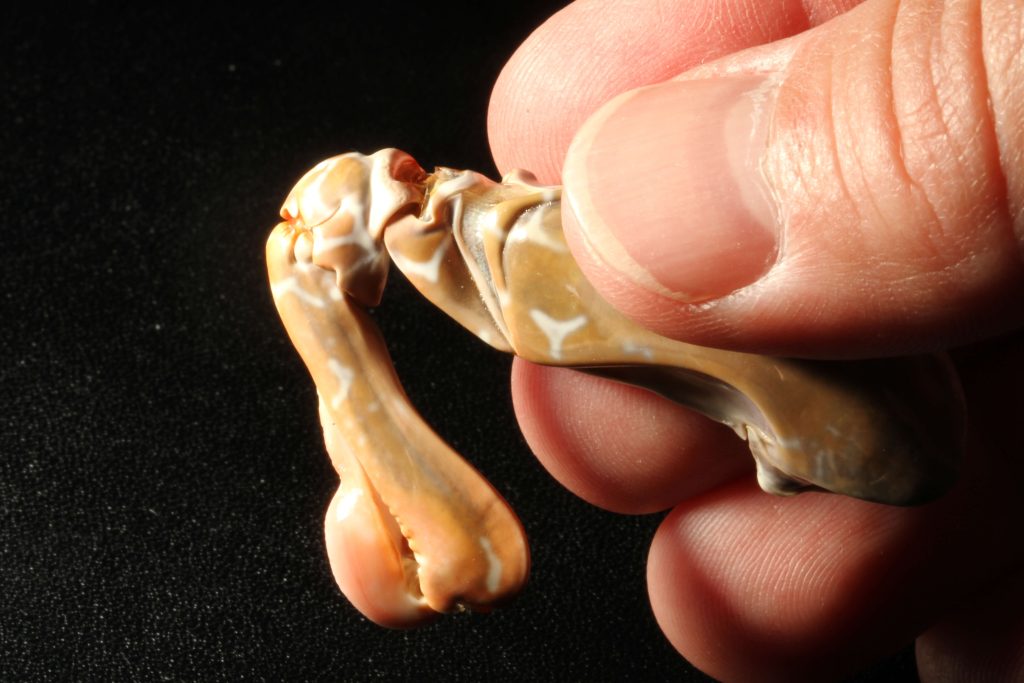A team of international researchers has turned towards mother nature in a bid to 3D print ceramic composite materials with bio-inspired toughening characteristics.
Ceramics composites with damage-resistant properties are in high demand, as toughness is a key requirement in a wide variety of industrial applications. These materials also tend to offer combinations of chemical and mechanical stability, qualifying them for use in everything from automotive and aerospace to energy systems.
Unfortunately, many of today’s conventional ceramic composite processing techniques, such as ice templating or freeze casting, are unable to create parts with complex and custom geometries, owing to limitations in mold manufacturing.
The international team is now exploring how the protective structures found in mantis shrimps can be used in conjunction with digital light processing (DLP) 3D printing to create geometrically complex ceramic composite components.

What’s so special about the mantis shrimp?
Mantis shrimps, also known as stomatopods, are a type of small multi-colored marine crustacean. They’re well known for their aggressive nature and signature fist-like appendage called a dactyl club.
The in-built weapon is used to smash and kill hard-shelled prey such as crabs and snails, moving with incredible force to break through even the most protective of shells. In fact, it’s believed that dactyl clubs can reach accelerations of up to 10,000g, resulting in impacts matching the speed of a .22 caliber bullet.
But what makes them so durable? Dactyl clubs feature a bi-continuous structure that helps them absorb impacts and filter out damaging shear waves without breaking a sweat. The organic phase is made of chitin, a compound commonly found in insect and crustacean shells, while the inorganic phase is composed of amorphous calcium phosphate and calcium carbonate.
Together, the double-trouble structure forms a crack-resistant shielding effect that protects the club, much to the dismay of the mantis shrimp’s prey.

Hardness improvements of 116x
In the present study, the research team paid homage to the works of natural selection and 3D printed complex ceramic composite structures with bi-continuous zirconia/epoxy phases.
To test just how tough the biomimetic printed structures were, they applied the concept to restorative dentistry, 3D printing a series of pontic bridges with 75% vol. zirconia. The graded ceramic walls of the bridges increased linearly in thickness from 0.3mm to 0.7mm, showcasing graded stress distributions that dispersed any compressive stresses on the parts in a uniform fashion.
In a series of compressive tests, the team found that their printed ceramic composites increased in strength by up to 213% when compared to pure ceramic. Young’s modulus increased only slightly in the printed parts. Amazingly, the hardness of the printed structures also increased by up to 116x, all while enabling unique geometries that would’ve been impossible to manufacture using conventional techniques.
Ultimately, the study shows great promise when it comes to biomimicking the bi-continuous architecture of mantis shrimps. The 3D printed ceramic composites exhibited excellent toughness and compressive strength characteristics, which are particularly useful in custom dental restoration applications.
Further details of the study can be found in the paper titled ‘3D printing of ceramic composite with biomimetic toughening design’.
This certainly isn’t the first piece of additive manufacturing research centered around biomimicry. Just recently, a team of researchers from the US used 3D printing technology to create octopus-inspired adhesive suckers. The team, led by Virginia Tech, developed its own nature-inspired nervous system capable of detecting objects and automatically switching on adhesion in a matter of milliseconds. The adhesive skin was integrated into a wearable glove, providing a novel way of manipulating objects in an underwater environment.
Elsewhere, researchers at ETH Zurich 3D printed artificially colored nanostructures, drawing inspiration from the wings of a butterfly. Native to tropical Africa, the wings of the Cynandra opis species are characterized by their vibrant colors. Rather than being pigment-based, however, these colors are structural, meaning they’re produced by intricate nanostructures on the surface of the wings.
Subscribe to the 3D Printing Industry newsletter for the latest news in additive manufacturing. You can also stay connected by following us on Twitter, liking us on Facebook, and tuning into the 3D Printing Industry YouTube Channel.
Looking for a career in additive manufacturing? Visit 3D Printing Jobs for a selection of roles in the industry.
Featured image shows the mantis shrimp. Photo via Roy L. Caldwell, University of California, Berkeley.



